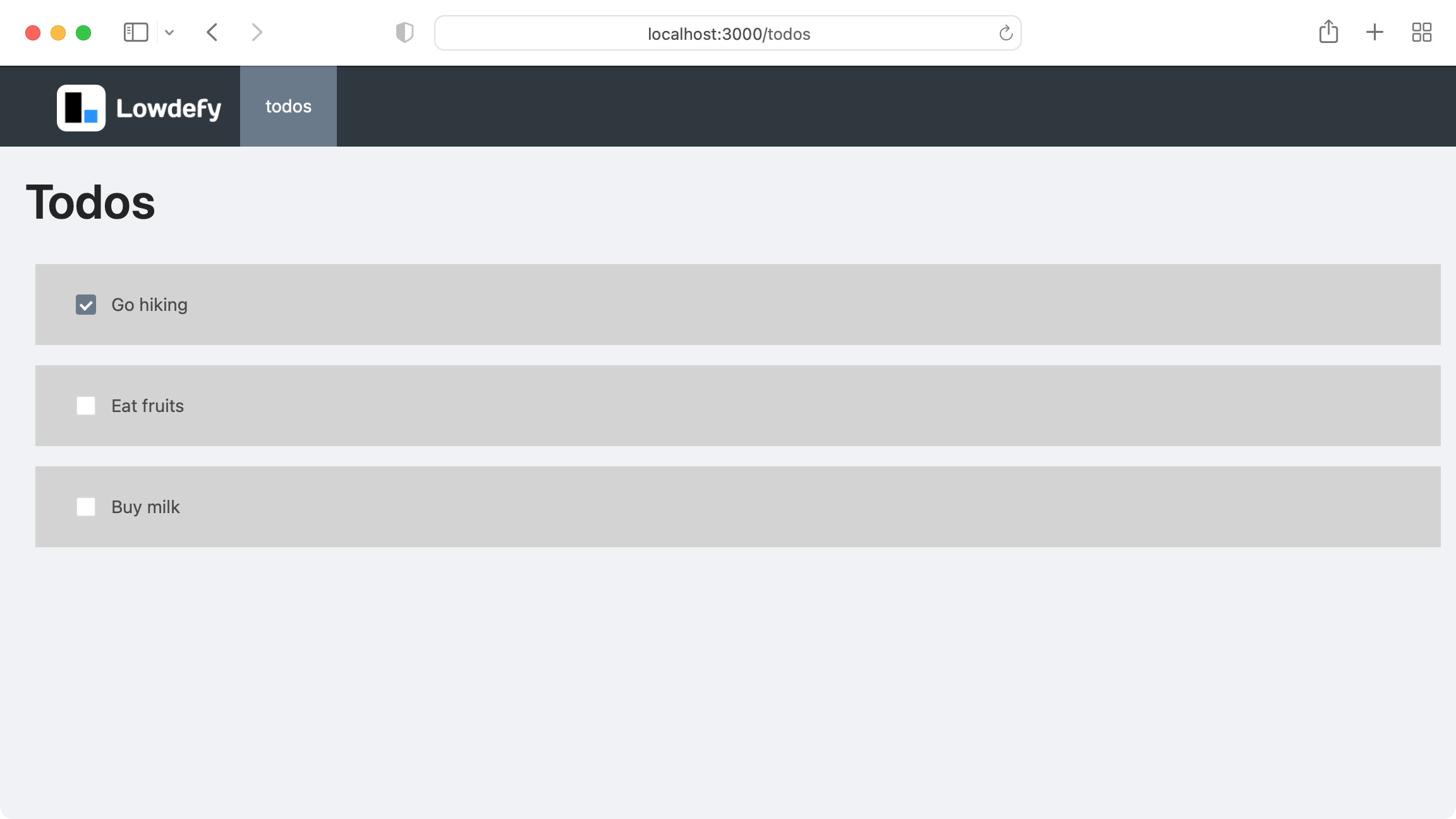How To Build a Todo App With Airsequel and Lowdefy
In this tutorial we will be building a very simple todo app with Lowdefy. It will load the todos via GraphQL from a SQLite database hosted on Airsequel.
This is what the final app will look like. Not pretty, but functional!

If you find any problems in this tutorial, please feel free to leave a comment!
Setting up the Airsequel Database
Things to know:
- As the primary key we use the automatically generated
rowidcolumn.
First, let's create the todo database in Airsequel's UI. If you're on Airsequel Enterprise you can alternatively use following steps:
- Alternative way for Airsequel Enterprise: Upload an existing SQLite database
<aside>
💡 The next steps describe how to create the database with the
sqlite3cli tool. You can of course also use one of the many graphical database management apps like e.g. DB Browser for SQLite or Beekeeper Studio.</aside>Create a
schema.sqlfile for creating the SQLite database:schema.sqlCREATE TABLE todos ( title TEXT NOT NULL, completed BOOLEAN DEFAULT (FALSE) NOT NULL ); -- Add some example todos INSERT INTO todos (title, completed) VALUES ('Buy milk', 0), ('Go hiking', 1);
Execute SQL query to create the database:
sqlite3 todos.sqlite < schema.sqlGo to airsequel.com and upload the
todos.sqlitefile.
Or build it up from scratch:
- Go to airsequel.com (or your custom Enterprise instance)
- Click on “Create New SQLite Database”
- Rename database to “todos”
- Go to the “Tables” tab
- Rename “table_1” to “todos”
- Rename column “name” to “title”
- Add a new column “completed” with type “Boolean” and activate “Not Null”
- Create a few todos like “Buy milk” and “Go hiking” to make working with it easier
🎉 Your database and the corresponding GraphQL endpoint are now ready!
Creating the Lowdefy App
Create the directory and the boilerplate code:
mkdir lowdefy-todo-app cd lowdefy-todo-app npx lowdefy@latest initStart development server:
npx lowdefy@latest dev
You should now see the welcome screen running at localhost:3000/welcome:

Since Lowdefy does not have a dedicated GraphQL connector yet (https://github.com/lowdefy/lowdefy/issues/298),
we simply use the more generic AxiosHttp module to make the necessary HTTP POST request.
Therefore add following block right below the name: … line:
connections:
- id: graphql_api
type: AxiosHttp
properties:
baseURL: https://<your-company>.airsequel.com
In order to render our todos, replace now the pages: block with following code and replace <database-id>with your database id from database setup step.
pages:
- id: todos
type: PageHeaderMenu
requests:
- id: todos_request
type: AxiosHttp
connectionId: graphql_api
properties:
url: /dbs/<database-id>/graphql
method: post
data:
query: "{ todos { title, completed } }"
events:
onEnter:
- id: fetch_todos
type: Request
params: todos_request
- id: set_todos
type: SetState
params:
todo_list:
_request: todos_request.data.data.todos
blocks:
- id: title_main
type: Title
properties:
content: Todos
- id: todo_list
type: List
blocks:
- id: todo_container_$
type: Box
style:
background: LightGray
margin: 0.5rem
padding: 1rem 2rem
blocks:
- id: todo_list.$.completed
type: CheckboxSwitch
layout:
size: 2em
align: middle
properties:
label:
disabled: true
- id: todo_title_$
type: Span
layout:
grow: 1
align: middle
properties:
content:
_state: todo_list.$.title
Now, the complete file looks like this:
🚧 The next steps in this tutorial will be added soon! In particular: Writing, updating, and deleting todos